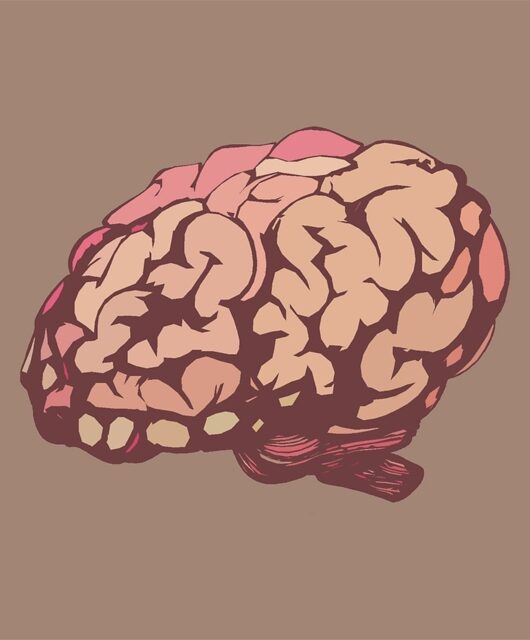What is Opioid Addiction? Everything You Need to Know

The United States is currently in the middle of a serious opioid epidemic. In fact, more than 100 people die every day from an opioid overdose.
Most people are aware that opioid addiction is a problem in the U.S. But, the majority of these people also don’t know much about it or how it can be treated.
If you’re part of this group, keep reading. Explained below are some important facts about opioids and opioid addiction.
What are Opioids?
Opioids are drugs that bind to the opioid receptors in the brain and spinal cord.
Opioids disrupt pain signals and help those struggling with chronic or acute pain experience relief.
Opioids also trigger the release of the neurotransmitter, dopamine, and activate reward areas in the brain. This, in turn, brings on feelings of euphoria (also known as a “high”).
Commonly Used Opioids
There are many different opioid drugs that individuals rely on and become addicted to. Some of the most commonly used opioid drugs include:
- Morphine: A drug naturally derived from the opium poppy plant
- Codeine: A drug similar to morphine that is often used as a cough suppressant, in addition to a painkiller
- Heroin: An illegal drug that is synthesized from morphine
- Hydrocodone: A semi-synthetic, lab-manufactured opioid, the most widely prescribed opioid in the U.S.
- Oxycodone: Another semi-synthetic, lab-manufactured opioid
- Fentanyl: A fully synthetic opioid drug that was originally developed as an anesthetic for those undergoing surgery
Methadone is another fully synthetic opioid. It is often prescribed to help those who are recovering from heroin addiction manage their withdrawal symptoms. As with other opioid drugs, though, methadone also has the potential to be habit-forming.
What is Opioid Addiction?
Because of the fact that they trigger a dopamine release, opioids are highly habit-forming. Many people become dependent on them. As a result, they experience withdrawal symptoms after they stop consuming them.
Opioid dependence often occurs alongside opioid tolerance.
This means that people who consume opioids need to continuously take larger doses of the drug in order to experience the same effect that they once experienced.
Addiction Risk Factors
Anyone can fall victim to opioid addiction. At the same time, though, some people are more likely to become addicted than others.
Some well-known addiction risk factors include:
- Being female (women face a higher risk of opioid abuse and addiction compared to men, perhaps because they’re more likely to struggle with chronic pain)
- Past or current substance abuse issues
- Untreated psychiatric disorders
- Being young (young adults aged 18-35 are most likely to become addicted to opioids)
- Growing up in family or social environments that encourage drug abuse
- Being unemployed
- Having a history of criminal or illegal activity
Individuals who are going through stressful periods in their lives are also more likely to experience opioid addiction.
Symptoms of Opioid Addiction
If someone is struggling with addiction to opioids, they will likely experience a wide range of psychological, behavioral, and physical symptoms. Some of the most common symptoms include:
Psychological Symptoms
The following are some of the most common psychological symptoms an individual will experience when they’re addicted to opioids:
- Increased anxiety and anxiety attacks
- Depression
- Irritability and mood swings
- A decrease in motivation
In extreme cases, the individual who’s addicted to opioids may even experience bouts of psychosis.
Behavioral Symptoms
You’ll also notice that someone who’s addicted to opioids will experience changes in behavior, often drastic ones.
Common behavioral symptoms include:
- Using opioids for longer or in larger quantities than originally intended
- Unsuccessfully attempting to decrease the number of opioids taken
- Spending large amounts of time figuring out how to obtain or use opioids
Those who are addicted to opioids may also abandon important activities or lose interest in activities they once enjoyed.
Physical Symptoms
There are also a number of physical symptoms associated with opioid abuse and addiction. If someone you know is struggling with an opioid addiction, you may notice the following physical changes:
- Increased alertness and sensitivity to sensory stimuli
- Increases in energy levels
- Decreases in appetite
- Increased libido
- Insomnia
People who are addicted to opioids also often experience physical health problems like rapid heart rate, high blood pressure, and constricted blood vessels.
How to Treat Opioid Addiction
There are several different approaches an individual can take when it comes to treating addiction to opioids.
Some common addiction treatment options include:
Rapid Detox Centers
Rapid detox centers provide an addict with support while they work through the acute withdrawal symptoms that occur after giving up opioids
Outpatient Services
This is a treatment plan an individual can follow while they live at home and tend to their everyday responsibilities
Residential Treatment Facilities
This is a temporary housing service where patients live while they receive medication, medical care, and support from professionals and other individuals in recovery
Inpatient Hospital Treatment
This option provides round-the-clock care for individuals experiencing severe withdrawal symptoms
Tips for Overcoming Addiction Recovery Roadblocks
Of course, there are many roadblocks an individual might face while going through addiction treatment. Some frequently experienced roadblocks include:
A Lack of Support
Insufficient support can also cause someone to relapse. It’s helpful to know that friends or family are on your side when you’re going through recovery.
It’s also helpful to have the support of therapists or counselors who can provide you with guidance and encouragement when you need it most.
Trading One Addiction for Another
Often, individuals struggling with addiction to opioids end up trading that addiction for another one.
This is especially common when the individual is using a prescription drug like methadone to manage their symptoms.
Working with a qualified medical team can help people learn new coping mechanisms and address the thought processes and behaviors that increase their chances of addiction.
An Unsafe Living Environment
If someone lives in an area in which they are surrounded by temptation, they’re going to have a hard time staying clean.
Often, addicts need to completely change up their living situation to avoid temptations to use opioids or other drugs.
Learn More About Overcoming Addiction Today
Opioid addiction is a serious issue. Is someone you know struggling with it? If so, this information can help you learn more about their condition and figure out how to help them recover.
If you want to learn more about recovering from opioid addiction — or addiction in general — be sure to check out this article.
It’s full of great tips you can implement to support your loved one and help them through the recovery process.









